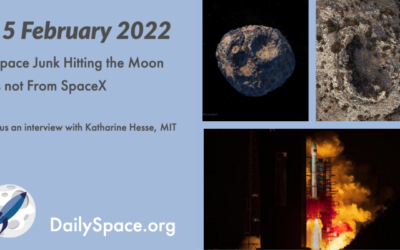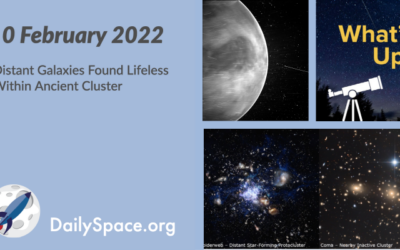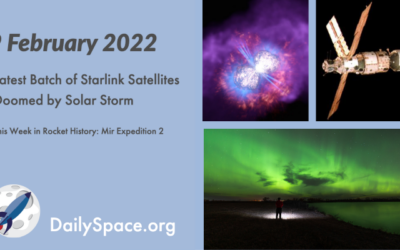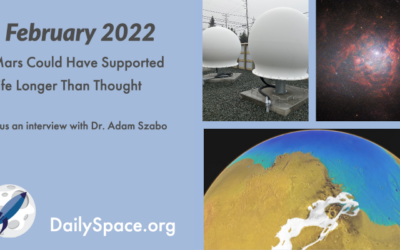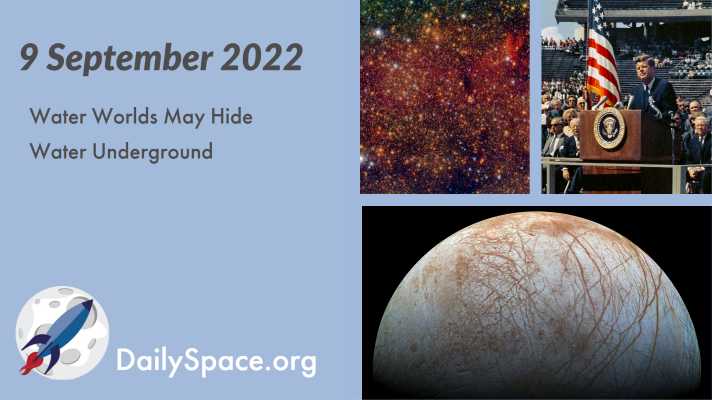
Water Worlds May Hide Water Underground
A population study of 43 exoplanets orbiting M-dwarf stars used both the transit method and radial velocity method to find the densities of the worlds and a surprising pattern emerged. The planets are less dense than expected, suggesting they are not purely rock but half-rock and maybe half-water. Plus, star factories in the Milky Way, glaciers on ancient Mars, and This Week in Space History.
Catch us on NowMedia TV
Saturday 11pm Central / midnight Eastern
Sunday 10pm Central / 11pm Eastern
Watch live on these stations: Houston 21.10, Atlanta 22.10
or tune-in on Apple TV, Roku, YouTube Live, or Amazon Prime
Space Junk Hitting the Moon is not From SpaceX
Observers tracking a piece of space debris that is expected to impact the far side of the Moon early in March have now corrected the origin of the object, which isn’t from SpaceX but is from a Chinese Long March 3B involved in the Chang’e 5TI mission. Plus, asteroid 16 Pysche, craters in Wyoming, more launches, and an interview with Katharine Hesse from the TESS mission.
Old Falcon 9 Stage Reenters Over Mexico
The second stage of a Falcon 9 rocket launched in 2017 re-entered the atmosphere over Mexico, breaking up and creating a show of fiery lights in the sky. Plus, dead stars with possibly living planets, more on moon formation, more launches, more launch failures, and a review of “The Apollo Murders” by Chris Hadfield.
Distant Galaxies Found Lifeless Within Ancient Cluster
Defying expectations, an ultramassive galaxy and many of its cluster companions had already formed most of their stars and become inactive only two billion years after the beginning of the universe. Plus, the nightside of Venus, a new exoplanet for Proxima Centauri, and What’s Up.
Latest Batch of Starlink Satellites Doomed by Solar Storm
SpaceX launched another 49 Starlink satellites last week, but a geomagnetic storm caused by solar activity kept the satellites offline, and 40 of them failed to reach their final orbits after exiting safe mode. They are now deorbiting and breaking up in the Earth’s atmosphere. Plus, asteroid systems, Eta Carina, and this week in rocket history, we look back at Mir Expedition 2.
Mars Could Have Supported Life Longer Than Thought
A NASA-funded simulation of early Mars revealed that the climate three billion years ago on the red planet was very similar to Earth now, with a stable ocean in the northern hemisphere. This new timeline would have given life another 500 million years to develop. Plus, a dwarf galaxy, Saturn’s aurorae, a Soyuz launch, and an interview with Dr. Adam Szabo, mission scientist for the Parker Solar Probe.
Moons May Be Beneficial to Life Beyond Earth
New simulations find that to form a moon with a similar size ratio to our own system, certain types of planets are needed. And that type of moon-planet system could then be beneficial to the rise of life on the planet. Plus, a Starlink launch, puffy planets, and training astronauts underwater for spacewalks.


 We record most shows live, on Twitch. Follow us today to get alerts when we go live.
We record most shows live, on Twitch. Follow us today to get alerts when we go live.

